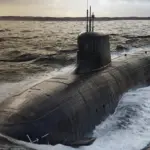
NATIONAL HARBOR, Md.—A pilot program that leverages commercial satellite imagery and related analytics to create more situational awareness for combatant commanders on “tactically relevant timelines” has proven its worth, the chief of the U.S. Space Force said on Tuesday. The $40 million Tactical Surveillance, Reconnaissance and Tracking (TacSRT) pilot program supported U.S. Africa Command (AFRICOM), providing more than 50 operational products, including timely analysis of activities, Gen. Chance Saltzman, chief of space operations, said during a keynote address at the…

 By
By 










